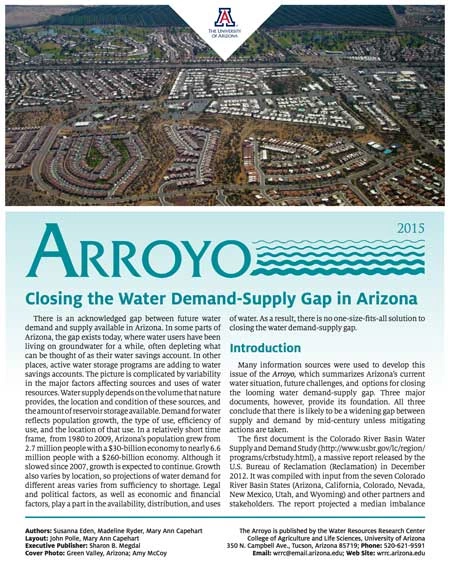
There is an acknowledged gap between future water demand and supply available in Arizona. In some parts of Arizona, the gap exists today, where water users have been living on groundwater for a while, often depleting what can be thought of as their water savings account. In other places, active water storage programs are adding to water savings accounts. The picture is complicated by variability in the major factors affecting sources and uses of water resources. Water supply depends on the volume that nature provides, the location and condition of these sources, and the amount of reservoir storage available. Demand for water reflects population growth, the type of use, efficiency of use, and the location of that use. In a relatively short time frame, from 1980 to 2009, Arizona’s population grew from 2.7 million people with a $30-billion economy to nearly 6.6 million people with a $260-billion economy. Although it slowed since 2007, growth is expected to continue. Growth also varies by location, so projections of water demand for different areas varies from sufficiency to shortage. Legal and political factors, as well as economic and financial factors, play a part in the availability, distribution, and uses of water. As a result, there is no one-size-fits-all solution to closing the water demand-supply gap.

